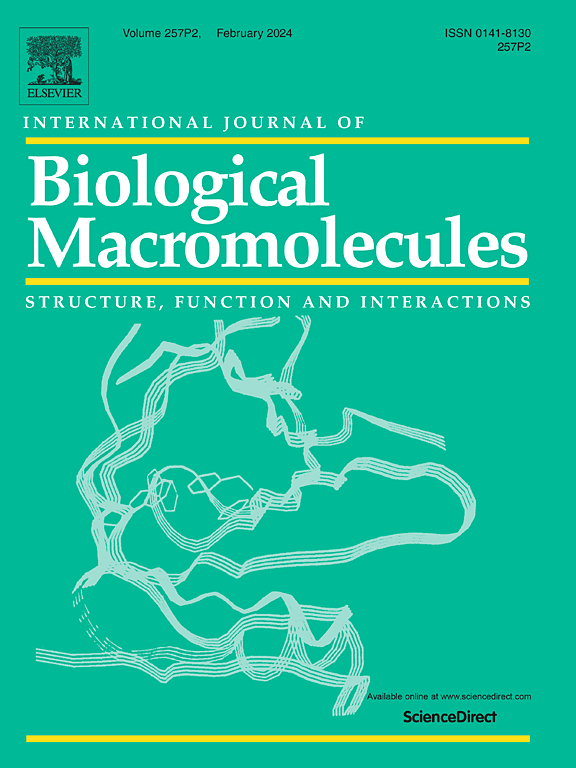超声辅助混合污水污泥生产聚羟基烷酸盐:探讨饥馑状态和微生物恢复力
IF 8.5
1区 化学
Q1 BIOCHEMISTRY & MOLECULAR BIOLOGY
International Journal of Biological Macromolecules
Pub Date : 2025-06-01
DOI:10.1016/j.ijbiomac.2025.144787
引用次数: 0
摘要
本研究探讨了利用创新的超声辅助微生物驯化策略从城市污泥中生产聚羟基烷酸酯(pha)。通过在受控的盛宴/饥荒制度下使用混合微生物培养(MMCs),研究探索了超声波发酵剩余混合污泥作为主要原料的使用。在2500、10,000和20,000 kJ/kg三个能量输入水平下进行发酵,以评估能量输入对底物溶解和挥发性脂肪酸(VFA)产生的影响。该工艺产生了富含VFA的出水,其中乙酸含量为114 mM,丙酸含量为39.04 mM,丁酸含量为10.11 mM,总VFA浓度为13.3 gCOD/L。在实验室规模的序批式反应器(SBR)中,利用该富集废水培养驯化的MMC,以4.5 g/L乙酸为主要碳源,优化PHA积累。我们的研究结果显示,总VFA的PHA产量为0.415至0.482 gPHA/gCOD,相应的积累效率为41.5%至48.2%。采用扫描电镜(SEM)、能量色散x射线能谱(EDS)和傅里叶变换红外光谱(FTIR)对产物进行了表征。这项研究强调了城市污泥作为生物塑料生产的可持续和具有成本效益的原料的潜力。本文章由计算机程序翻译,如有差异,请以英文原文为准。
Ultrasonication-assisted polyhydroxyalkanoate production from mixed sewage sludge: Exploring the feast-famine regime and microbial resilience
This study examines the production of polyhydroxyalkanoates (PHAs) from municipal sludge using an innovative ultrasonication-assisted microbial acclimatization strategy. By employing mixed microbial cultures (MMCs) under a controlled feast/famine regime, the research explores the use of ultrasonicated fermented surplus mixed sludge as the primary feedstock. Fermentation was conducted at three energy input levels - 2500, 10,000, and 20,000 kJ/kg - to evaluate the impact of energy input on substrate solubilization and volatile fatty acid (VFA) production. The process yielded a VFA-rich effluent containing significant concentrations of 114 mM acetate, 39.04 mM propionate, and 10.11 mM butyrate, resulting in a total VFA concentration of 13.3 gCOD/L. This enriched effluent was utilized to cultivate an acclimatized MMC in a lab-scale sequencing batch reactor (SBR), with 4.5 g/L acetate serving as the primary carbon source to optimize PHA accumulation. Our findings revealed PHA yields ranging from 0.415 to 0.482 gPHA/gCOD of total VFA, corresponding to an accumulation efficiency of 41.5 % to 48.2 %. The produced PHAs were characterized using scanning electron microscopy (SEM), energy-dispersive X-ray spectroscopy (EDS), and Fourier transform infrared spectroscopy (FTIR). This study underscores the potential of municipal sludge as a sustainable and cost-effective feedstock for bioplastic production.
求助全文
通过发布文献求助,成功后即可免费获取论文全文。
去求助
来源期刊
CiteScore
13.70
自引率
9.80%
发文量
2728
审稿时长
64 days
期刊介绍:
The International Journal of Biological Macromolecules is a well-established international journal dedicated to research on the chemical and biological aspects of natural macromolecules. Focusing on proteins, macromolecular carbohydrates, glycoproteins, proteoglycans, lignins, biological poly-acids, and nucleic acids, the journal presents the latest findings in molecular structure, properties, biological activities, interactions, modifications, and functional properties. Papers must offer new and novel insights, encompassing related model systems, structural conformational studies, theoretical developments, and analytical techniques. Each paper is required to primarily focus on at least one named biological macromolecule, reflected in the title, abstract, and text.

 求助内容:
求助内容: 应助结果提醒方式:
应助结果提醒方式:


